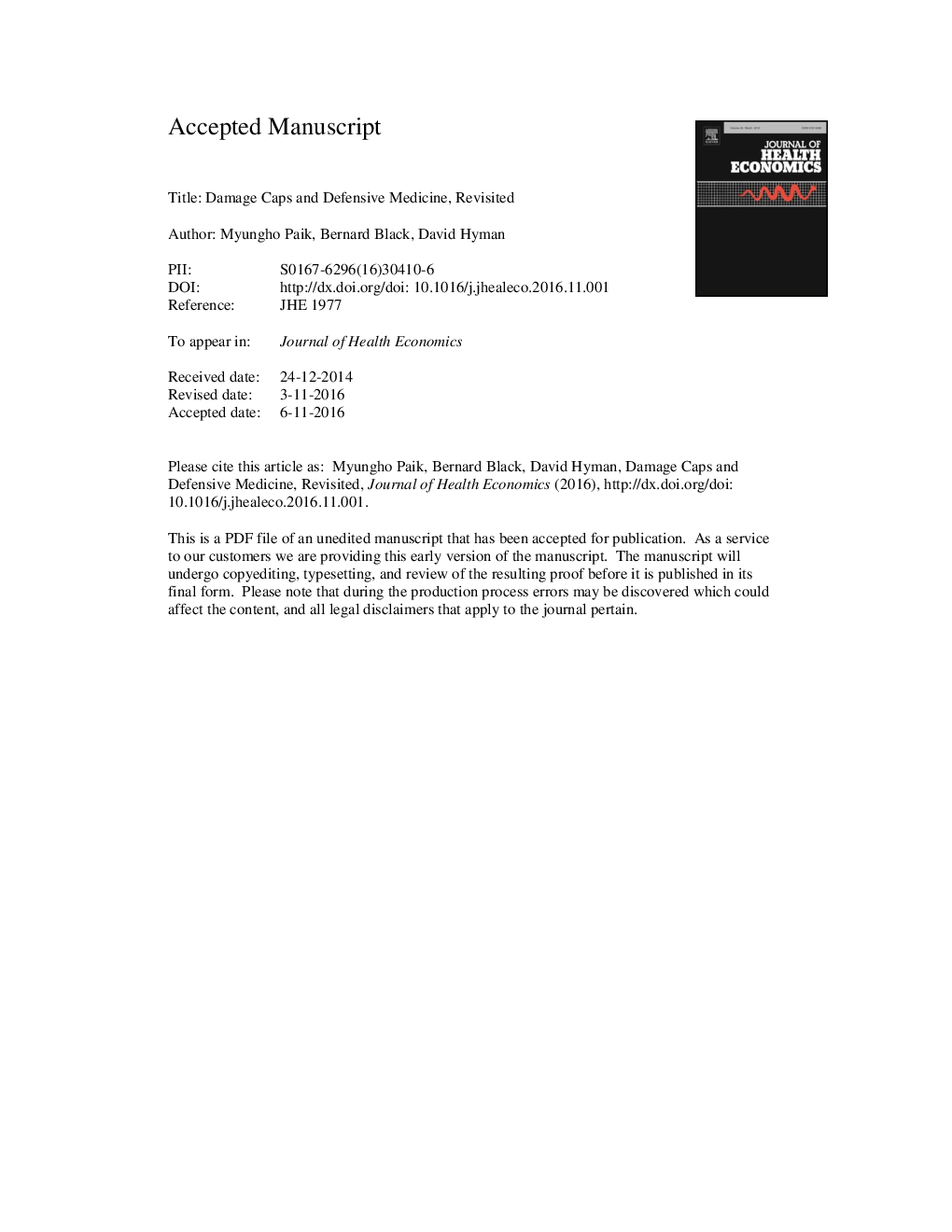| Article ID | Journal | Published Year | Pages | File Type |
|---|---|---|---|---|
| 5100788 | Journal of Health Economics | 2017 | 33 Pages |
Abstract
Does tort reform reduce defensive medicine and thus healthcare spending? Several (though not all) prior studies, using a difference-in-differences (DiD) approach, find lower Medicare spending for hospital care after states adopt caps on non-economic or total damages (“damage caps”), during the “second” reform wave of the mid-1980s. We re-examine this issue in several ways. We study the nine states that adopted caps during the “third reform wave,” from 2002 to 2005. We find that damage caps have no significant impact on Medicare Part A spending, but predict roughly 4% higher Medicare Part B spending. We then revisit the 1980s caps, and find no evidence of a post-adoption drop (or rise) in spending for these caps.
Related Topics
Health Sciences
Medicine and Dentistry
Public Health and Health Policy
Authors
Myungho Paik, Bernard Black, David A. Hyman,
